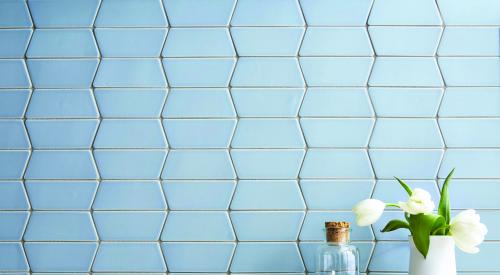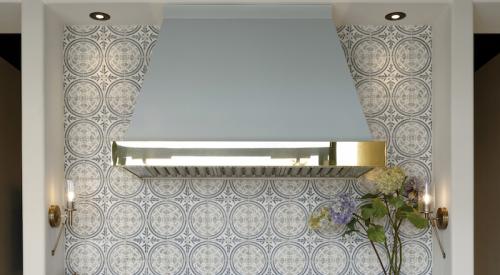PRODUCTS caught up with tile expert Ryan Fasan at the Spanish tile show Cevisama to explain the mystery behind red-body and white-body tile. Hint: It’s not what you think.
“Body color is an ongoing issue when selecting ceramic material,” the tile designer and technical consultant to the Spanish Ceramic Tile Industry, Tile of Spain, says. “The question of red-body vs white-body really only applies to material with a porosity of 3 percent to 15 percent suitable for residential and light-commercial walls at the higher-end and floors at the lower end.”
Fasan says specifiers should stop judging tile by the body color, which is an extremely poor indicator of quality.
[ Related: 13 COOL LOOKS WE SAW AT THE 2020 SPANISH TILE SHOW ]
“Generally red-body tile is less expensive because the clay is readily available local material in Spain,” the former tile setter says. “In fact, clients should be happy to see a factory is offering red-body material options as they are likely to get a higher-end material at a price that fits the budget than they would otherwise.”
The quality of a ceramic tile is based more on the quality of the manufacturer, clay density rather than the color of the clay. “Instead of body color, clients should look at whether the company supplies industry standard data-sheets to gauge the quality of the material,” Fasan says.
Watch the video to find out more.
[ Related: DESIGNER SASHA BIKOFF, NEW RAVENNA RELEASE SWEEPING NEW TILE COLLECTION ]
[ Transcript ]
So red body white body what's the difference?
It's probably one of the, easily one of the most frequently asked questions I get from designers all the time: We're talking about the biskits color of the tile. It's also one of the most common misconceptions about tile that red body is inferior to white body.
It actually started in about 1980 and there were some countries where the local clay had a high iron content or a red body was a little bit unstable, it was difficult to get a good glaze fit. So a lot of that tile was crazing or there would be a lot of sizing variation in the tile.
It's not the case in Spain where we are right now. Red Spanish clay is actually a fantastic product, obviously so is white. We have a perception in North America that the white clay is better so what you see in most of the distributor's showroom around and the US and Canada is a white-body product because it sells better and that's just market perception. it has nothing to do with the actual quality of the material.
[Related: WHAT IS THE DIFFERENCE BETWEEN CUSTOM, SEMI-CUSTOM CABINETS?]
In fact we were talking to a manufacturer just today and he was saying that if it's a project specification they almost always use a red body because it's a local clay and it's a lot cheaper to use a product that they can just harvest in their backyard rather than shipping dirt around the world.
Once it's glazed that's all you see in an installation. You never ever see the biskit color so it really makes no difference if it's white or if it’s red once it's actually installed. So all it is is just perception in the showroom and the look of both of them is identical one it’s installed on the wall.











